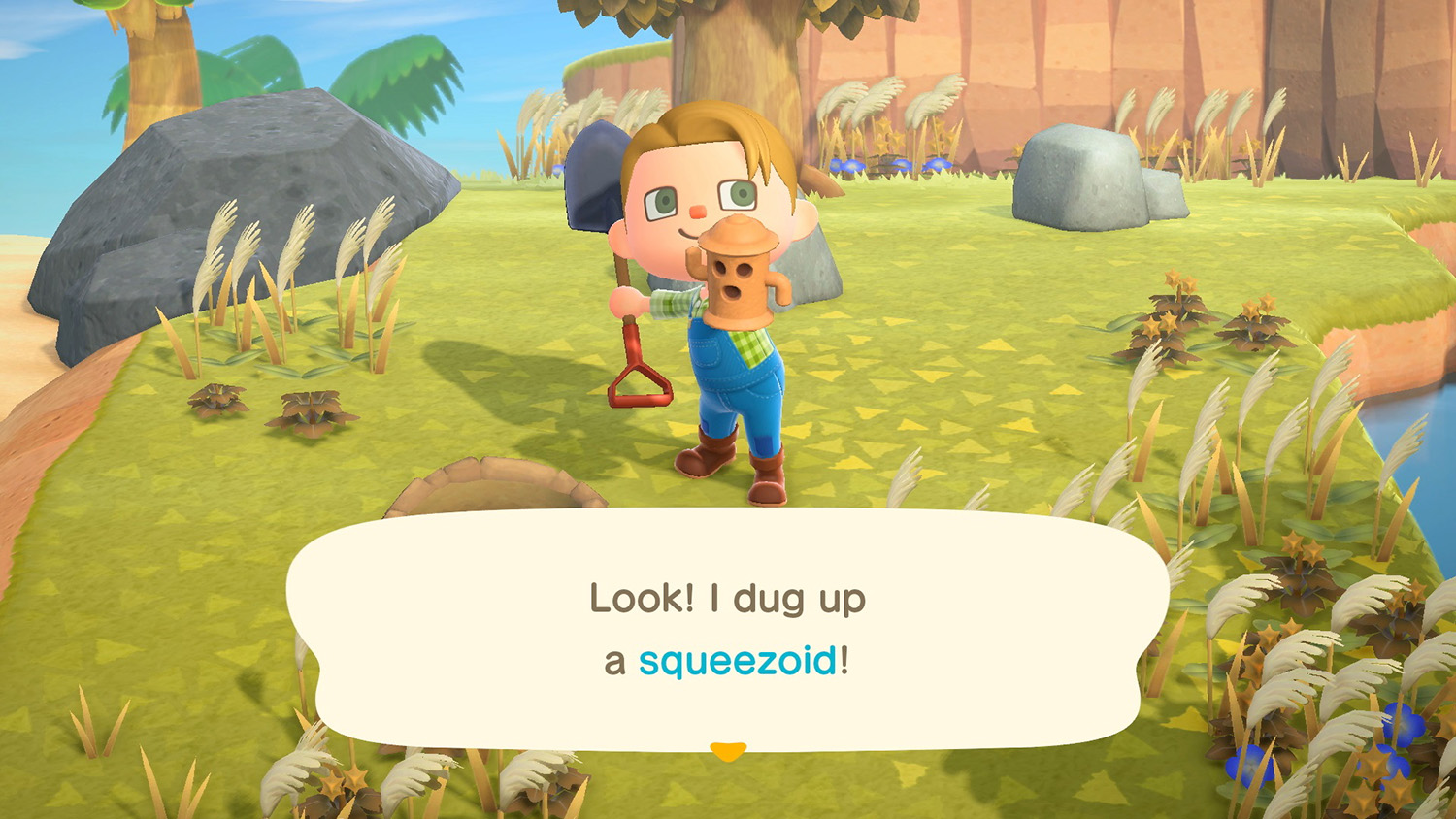‘Animal Crossing: New Horizons’: What Are Gyroids?
When Animal Crossing: New Horizons was first released in March 2020, many longtime fans noticed a few Animal Crossing staples missing from the game. Nintendo excluded beloved NPCs like Brewster and popular furniture items like Froggy Chair, leaving some people disappointed. However, thanks to a massive update coming in November, these things and plenty more old-school Animal Crossing features will soon return, including the ever-mysterious gyroids.
Nintendo dedicated a portion of its Animal Crossing: New Horizons Direct to gyroids, but it didn’t quite explain what these things are and where they came from. To do that, we’ll need to look back to the very beginnings of the franchise.

Gyroids have existed in ‘Animal Crossing’ since the first game
Gyroids first appeared in 2001’s Animal Crossing, the earliest installment of the franchise in the U.S. These funky items had hollow faces carved into their surfaces and angled arms. When a player activated a gyroid, the object produced a unique sound and “danced” by moving in a circular motion. Nearly 130 Gyroids could be classified into nearly 40 families, from Alloid to Warbloid, and each family had a shared appearance and sound.
In Animal Crossing, players could dig up gyroids after rainy or snowy days and display them in their homes. Multiple gyroids could be activated at once, but the number maxed out at 14.
Interestingly, some gyroids were sentient characters, not furniture items. The first Animal Crossing game featured a gyroid that sat outside the player’s home and saved the game for them when asked to do so. In Animal Crossing: City Folk, Nintendo introduced Lloid, who ran auctions for players to purchase items. He later returned in New Leaf and New Horizons to collect donations for public projects.
Some characters have also mentioned that they were friends with gyroids, suggesting that more sentient gyroids exist. Brewster, the barista at The Roost Cafe, also collected furniture gyroids and offered to store them for players.
But what is a gyroid, really?
Gyroids might seem a little pointless, but they do come with an interesting backstory. As Super Jump Magazine noted, Japanese Animal Crossing games refer to the items as “haniwa,” which means “clay cylinder.” According to Japanese history, haniwa were buried with the dead, believed to hold the deceased’s soul. They were also placed outside graves with armor and weapons to protect the dead from harm.
Because of the history, some Animal Crossing players have developed theories about the true purpose of gyroids. Many say that the items hold the souls of dead animal characters who wish to communicate with players. It’s also worth noting that the original Animal Crossing turned player faces into gyroids when they reset the game from another player’s town without saving.
Gyroids are making a comeback in ‘Animal Crossing: New Horizons’ in November
The furniture items were missing from Animal Crossing: New Horizons for over a year, but they’ll soon return — new and improved. The Nintendo Direct revealed that with the new update, players could once again dig up gyroids. However, this time, they can also bury gyroid fragments and water them to create new gyroids.
The items also have a more modern look. Instead of the clay cylinder appearance across all families, some gyroids come in new shapes, like a vase. Players can also customize gyroids with a variety of bright colors, unlike the muted tones of the original.
Animal Crossing veterans and newcomers alike can enjoy gyroids and dozens of other features with Update 2.0, arriving on Nov. 5.


